The bizarre Olympic sports of yesteryear: Hilarious photos reveal how athletes once competed in tug-of-war, solo synchronised swimming, and a ‘plunge for distance’
The addition of breakdancing to this year’s Olympic Games has left many fans surprised.
But this is probably not the strangest event to ever take place at this legendary international multi-sport event.
Since the first modern edition in Athens in 1896, several special disciplines have been contested during the Summer Olympic Games.
MailOnline takes a look at some of the most random sports, including tug-of-war, rope climbing, solo synchronised swimming and ‘dive for distance’.
Although these have all now been discontinued, a return to the Olympic programme can never be ruled out.
From tug-of-war, rope climbing and ‘diving for distance’: these are the strangest Olympic sports that have long since been retired
TUG OF WAR (1900-1920)
One of the longest-lived former Olympic sports was tug of war, which was held at five editions of the Games: 1900, 1904, 1908, 1912 and 1920.
As anyone who’s enjoyed it on the school playground – or watched Squid Game – knows, it involves two parties holding each other’s ends of a thick rope.
Using sheer brute force, both Olympic teams attempted to pull each other over a certain distance in order to be crowned the winner. This usually took place in a best-of-three format.
Great Britain won the gold medal in the tug of war twice: in 1908 on home soil in London and in 1920 in Antwerp.
Sweden and the US won gold in 1912 and 1904 respectively, while a mixed team of Danish and Swedish tugs won gold in 1900.
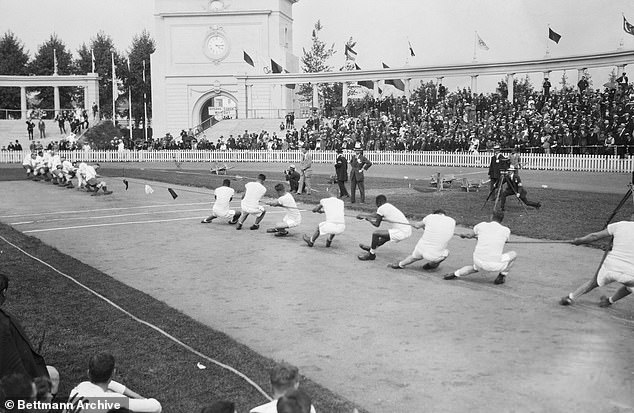
Great Britain defeats the American team in tug of war, during the 1920 Summer Olympics, Antwerp, Belgium. This was the last Olympic Games to feature tug of war
The 1908 London Olympics produced a controversial episode in Olympic history when a winning British tug-of-war team was accused by the US of wearing heavy police boots.
The American team protested to the jury, but the protest was rejected and the Americans withdrew from the tournament in despair.
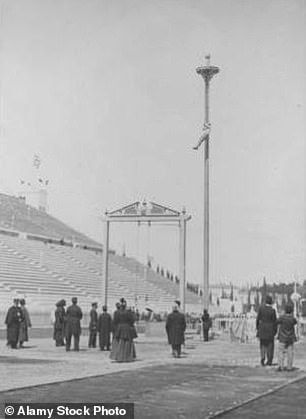
Rope climbing during event 1896 Summer Olympics
ROPE CLIMBING (1896-1932)
Another early discipline that is no longer on the Olympic list is rope climbing, an ultimate test of upper body strength.
The male and female competitors had to climb up a vertical rope hanging from a high frame.
The rope was up to 14 meters long and the participants did not wear safety harnesses, making the sport very risky.
Contestants were judged not only on how quickly they reached the top, but also on how stylishly they did so.
Rope climbing was included in the Olympic Games four times – in 1896, 1904, 1924 and 1932 – before being dropped, possibly due to safety concerns.
One of the most memorable climbers was American George Eyser, who won gold in 1904 despite his wooden leg.
Today, the most similar type of sport climbing is sport climbing, first introduced three years ago in Tokyo, where athletes must climb over artificial climbing walls wearing a harness.
DIVE FOR DISTANCE (1904)
The ‘plunge for distance’ was a part of a dive and a long jump. It was a water event that was held only once, during the 1904 Olympic Games in St. Louis.
As the name suggests, participants had to dive into the pool and float as far underwater as possible before being allowed to come back up for air.
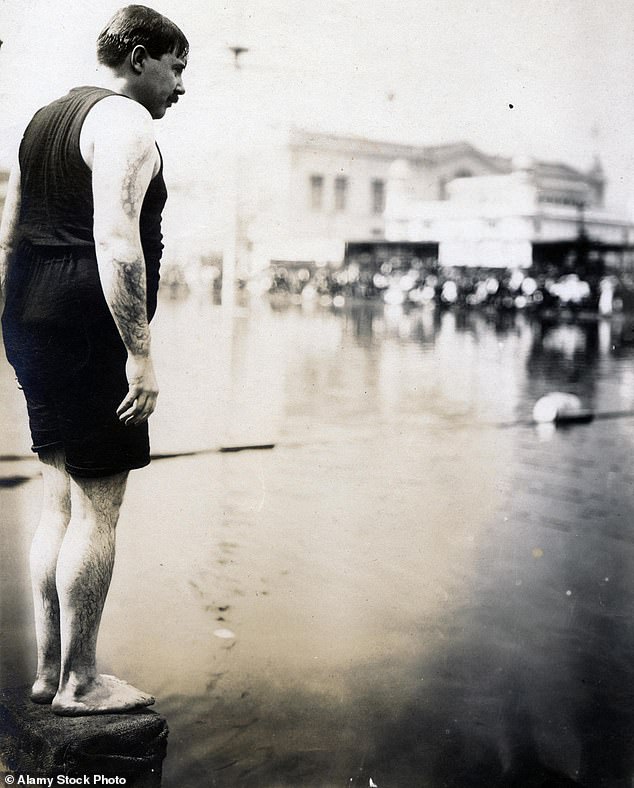
WE Dickey of the New York Athletic Club, winner of the Plunge for Distance competition at the 1904 Olympic Games with a throw of 62 feet, 6 inches
Strictly speaking, once participants entered the water, they were not allowed to move in any way, such as by flapping their feet.
Although the jump for distance proved popular in the late 19th century and early 20th century, it was quickly branded “boring” and “not at all athletic” by critics.
Swimming instructor Gerald Barnes wrote in his 1922 book that it only benefited “fatbergs who fall into the water with more or less success and depend on inertia to get points.”
HOT AIR BALLOON FLIGHT (1900)
While today’s Olympic Games last only two weeks, the 1900 Summer Olympics in Paris were spread over a whopping five months, from May to October.
This extra time allowed some competitions to last longer than others, such as hot air ballooning.
During the Paris balloon flight in 1900, two French balloonists set world records for distance (1,196 miles/1,925 km from Paris to Kiev) and duration (almost 36 hours).
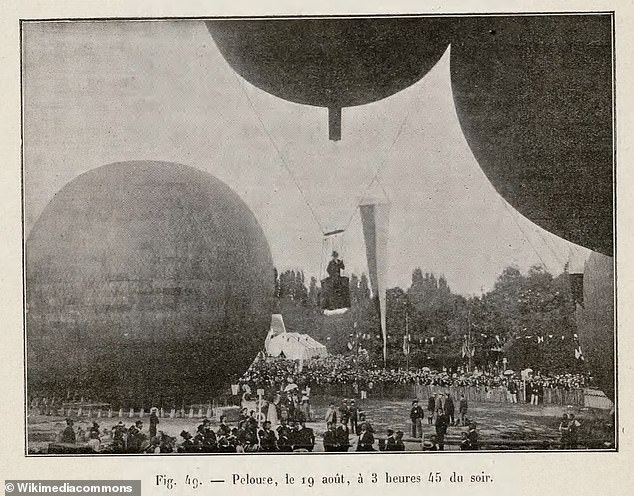
Ballooning was once held during the Olympic Games, in Paris in 1900. Pictured is the ballooning event of the 1900 Olympic Games at Le Parc d’aerostation in Paris.
One participant in the balloon race landed in Russia and was arrested for not applying for a passport.
However, some Olympic historians argue that ballooning should not be considered a former Olympic sport at all.
Since the 1900 Olympic Games, a number of ‘demonstration sports’ have been practiced, but the winners do not receive medals.
Ballooning was one of them, planned by Daniel Merillon, the president of the French Shooting Federation, not by the International Olympic Committee (IOC).
MOTORBOATING (1908)
Motorboating, also known as powerboating, was an official Olympic sport only once, in London 1908.
The race was open to men only and involved powerboats racing five laps around a course on Southampton Water.
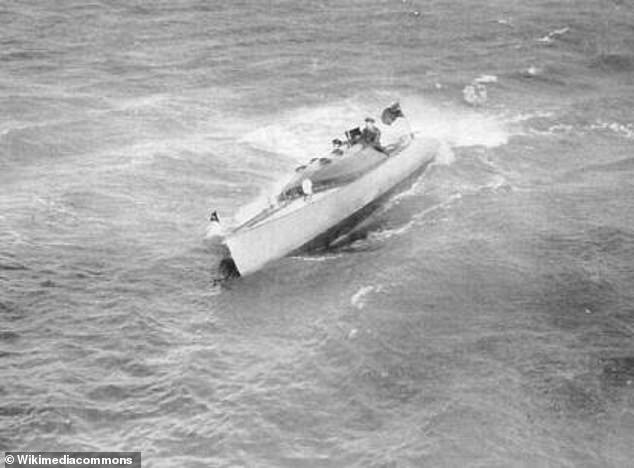
During the 1908 London Olympics, motorboat races were held on Southampton Water. The picture shows the British boat Wolseley-Siddely in heavy weather
But it was scrapped when the IOC realized that the Olympics were meant to test the endurance of the human body, not that of a motorcycle.
The only other Olympic motor sport was motor racing, which was held in Paris in 1900. An unofficial ‘Olympic rally’ was also held in Berlin in 1936, with prizes awarded.
SOLO SYNCHRONIZED SWIMMING (1984-1992)
At the 2024 Olympic Games in Paris, breakdancing will stretch the definition of an Olympic sport to include an improvised solo performance set to music.
In this respect, the solo synchronised swimming event, held between 1984 and 1992, was somewhat similar.
It was an event especially for women and participants had to perform intricate, precisely choreographed movements in the water to music.
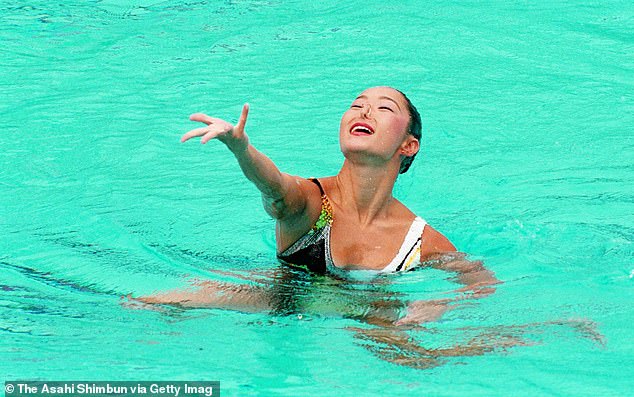
Fumiko Okuno of Japan competes in the solo synchronized swimming final at the 1992 Summer Olympics in Barcelona
But since there was no one to synchronize their movements with, the name ‘solo synchronized swimming’ was always a bit of a contradiction in terms.
Today, synchronized swimming with duos and teams of at least four people is still practiced at the Olympic Games, although the term is now called ‘artistic swimming’.
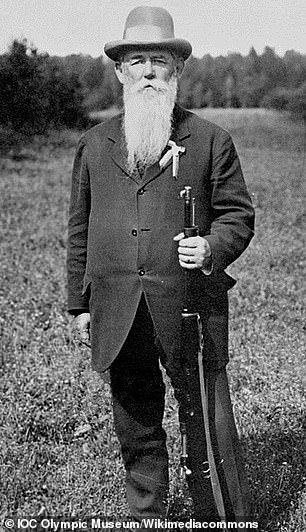
The oldest Olympian: Sweden’s Oscar Swahn, pictured here in Stockholm 1912
RUNNING DEER (1908-1924)
Shooting is of course still an Olympic discipline, but a particularly strange variation was the ‘running deer’, which was held between 1908 and 1924.
Fortunately, the Olympics did not involve live deer, although shooting the moving animal did provide the incentive.
The target, however, was a piece of wood in the shape of a deer, mounted on a cart on rails.
One of the most famous athletes in this sport was the Swede Oscar Swahn, who won his first Olympic gold medal at the age of 60 at the 1908 Games in London.
After the First World War he made his comeback in Antwerp 1920, where at the age of 72 he won silver in the running deer with double shot team competition.
He remains the oldest competitor at the Olympic Games, the oldest person to ever win gold, and the oldest athlete to ever win an Olympic medal.
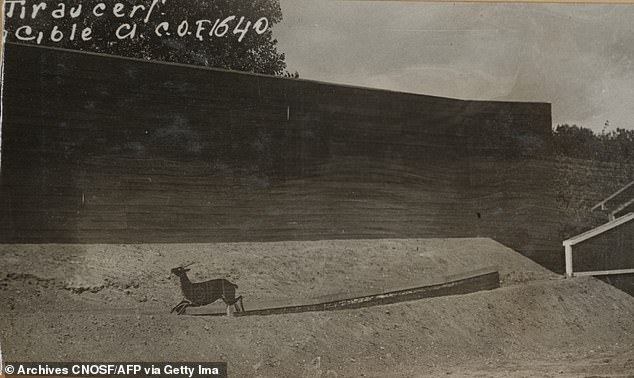
Fortunately, no live deer were involved in the Olympic competition. Pictured, wooden ‘running deer’ in Paris 1924
ART (1912-1948)
Perhaps most bizarrely, art competitions were part of the Summer Olympics from 1912 to 1948.
Medals were awarded for works submitted in five subcategories: architecture, painting, sculpture, literature and music.
Baron Pierre de Coubertin, the founder of the IOC and the modern Games, considered the integration of the arts fundamental to his vision.
However, the inclusion of the arts as an Olympic event was – as you might expect – hotly debated, leading to its discontinuation after London 1948.
Other, more conventional sports that had a short life at the Olympics include cricket (1900), croquet (1900) and lacrosse (1904–1908).
After an absence of more than a century, both cricket and lacrosse will make a comeback at Los Angeles 2028.
